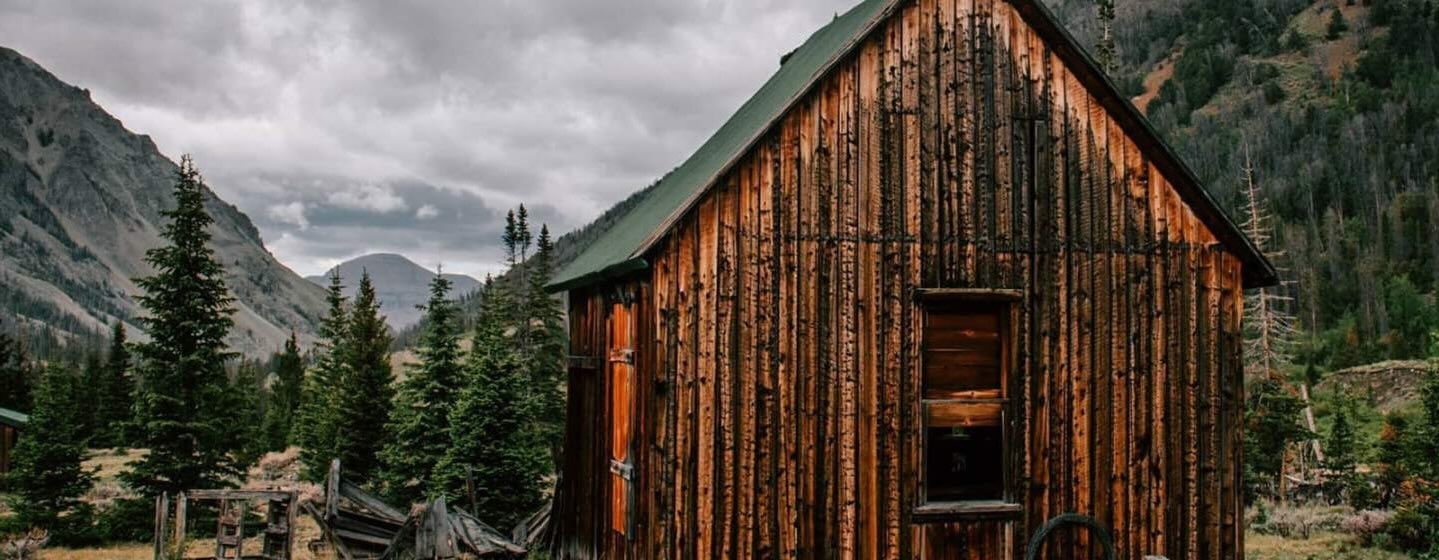Secrets Of Wyoming’s Ghostly Pioneer Ranches

Have you ever wondered what life was like for pioneers in Wyoming? Wyoming's ghostly pioneer ranches offer a fascinating glimpse into the past. These abandoned homesteads, scattered across the state, tell stories of rugged determination and survival. Walking through these ranches, you can almost hear the echoes of cowboys, farmers, and families who once called these places home. From weathered barns to crumbling cabins, each structure has its own tale. Visiting these sites is like stepping back in time, providing a unique way to connect with history. Ready to explore the haunting beauty of Wyoming's pioneer past?
Secrets of Wyoming's Ghostly Pioneer Ranches
Wyoming's vast landscapes hold more than just natural beauty. Hidden within its rolling plains and rugged mountains are ghostly pioneer ranches, each with stories of the past. These abandoned places offer a glimpse into the lives of early settlers and the challenges they faced. Ready to step back in time?
1. Kirwin Ghost Town
Kirwin, once a bustling mining town, now stands silent. Nestled in the Absaroka Mountains, it was abandoned after a devastating avalanche in 1907. Today, visitors can explore the remnants of cabins, a hotel, and mining structures. The eerie silence and crumbling buildings tell tales of ambition and tragedy.
2. South Pass City
South Pass City, a former gold mining town, thrived in the late 1800s. Now a state historic site, it preserves over 30 original structures. Wander through the old saloon, general store, and homes to feel the spirit of the Wild West. The town's rich history and well-preserved buildings make it a must-visit.
3. Fort Laramie
Fort Laramie served as a military post during the Indian Wars and a hub for pioneers traveling the Oregon Trail. Abandoned in 1890, it became a national historic site. Explore the fort's barracks, officer quarters, and parade grounds. The fort's strategic importance and historical significance offer a unique glimpse into frontier life.
4. Heart Mountain Relocation Center
During World War II, Heart Mountain housed Japanese Americans forcibly relocated from the West Coast. The site, now a National Historic Landmark, includes a museum and preserved barracks. Walking through the camp, one can sense the hardships and resilience of those interned. It's a poignant reminder of a dark chapter in American history.
5. Independence Rock
Independence Rock, a massive granite outcrop, was a landmark for pioneers on the Oregon, California, and Mormon Trails. Many carved their names into the rock, leaving behind a record of their journey. The inscriptions, some dating back to the 1800s, offer a tangible connection to the past. Climbing the rock provides a panoramic view of the surrounding plains.
6. Fort Bridger
Established in 1843 by mountain man Jim Bridger, Fort Bridger served as a supply post for emigrants. It later became a military outpost. Today, it features reconstructed buildings, including a trading post and barracks. The fort's history spans from the fur trade era to the military presence, making it a fascinating stop.
7. Medicine Bow
Medicine Bow, once a thriving railroad town, now has a population of just a few hundred. The Virginian Hotel, built in 1911, stands as a testament to the town's heyday. Visitors can stay in the historic hotel, explore the old train depot, and imagine life during the railroad boom. The town's charm and history make it a unique destination.
8. Fort Caspar
Fort Caspar, named after Lt. Caspar Collins, was a military post during the Indian Wars. The fort, reconstructed on its original site, includes a museum and several restored buildings. The exhibits and structures offer insights into the fort's role in protecting emigrant trails and the conflicts of the time.
9. Piedmont Charcoal Kilns
The Piedmont Charcoal Kilns, built in the 1860s, produced charcoal for the Union Pacific Railroad. The three beehive-shaped kilns are remarkably well-preserved. Visiting the site, one can imagine the labor-intensive process of charcoal production and the importance of the railroad in the region's development.
10. Atlantic City
Atlantic City, a small mining town, experienced a brief gold rush in the late 1800s. Some original buildings remain, including a saloon and general store. The town's remote location and rustic charm offer a glimpse into the challenges faced by early miners. It's a quiet, off-the-beaten-path destination for history enthusiasts.
Wyoming's Ghostly Pioneer Ranches Await
Wyoming's ghostly pioneer ranches offer a unique glimpse into the past. These abandoned sites tell stories of hard work, dreams, and sometimes heartbreak. Exploring these ranches, you can almost hear the whispers of history in the wind. Each location has its own tale, from the bustling life that once was to the eerie silence that now remains. Visiting these ranches isn't just about seeing old buildings; it's about connecting with the spirit of the pioneers who shaped this land. Whether you're a history buff or just love a good ghost story, these ranches provide a fascinating adventure. Pack your bags, grab a camera, and step back in time. Wyoming's ghostly pioneer ranches are waiting to share their secrets with you.

